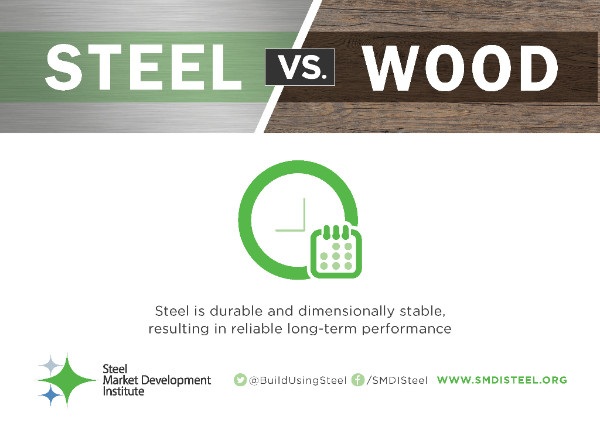Adaptability and Reuse

Adaptable buildings incorporate the ability to make future changes easily and with minimum expense at the design and construction stages. It means designing buildings to allow layers to change over time to meet the evolving needs of occupants. Incorporating adaptability into a building during initial design and construction saves time and money when changes are required later in the life of the building.
- One advantage of steel over other building materials is its ability to be recycled and reused over and over again and remade into new products without any loss of quality. Comparatively, other building materials can only be down-cycled into a lower-quality product.
- Steel construction enable adaptable and flexible design solutions. For example, steel floor systems can accommodate entirely new service arrangements within the floor-ceiling depth; and steel framing systems can be readily and economically adapted to cope with the changing requirements of occupants, avoiding functional obsolescence and the high cost and disruption of redevelopment or demolition.
- Steel is a resilient material, with reserve strength and ductility that result in significant advantages in natural disasters like earthquakes and hurricanes and extreme events like fire and blast, avoiding the need for costly redevelopment or demolition.
- Buildings are complex assemblies of many different resources with a large investment of materials, labor, and energy. Steel-intensive buildings enable design flexibility over time while maintaining integrity, reducing demand for natural resources and increasing value to future generations.
